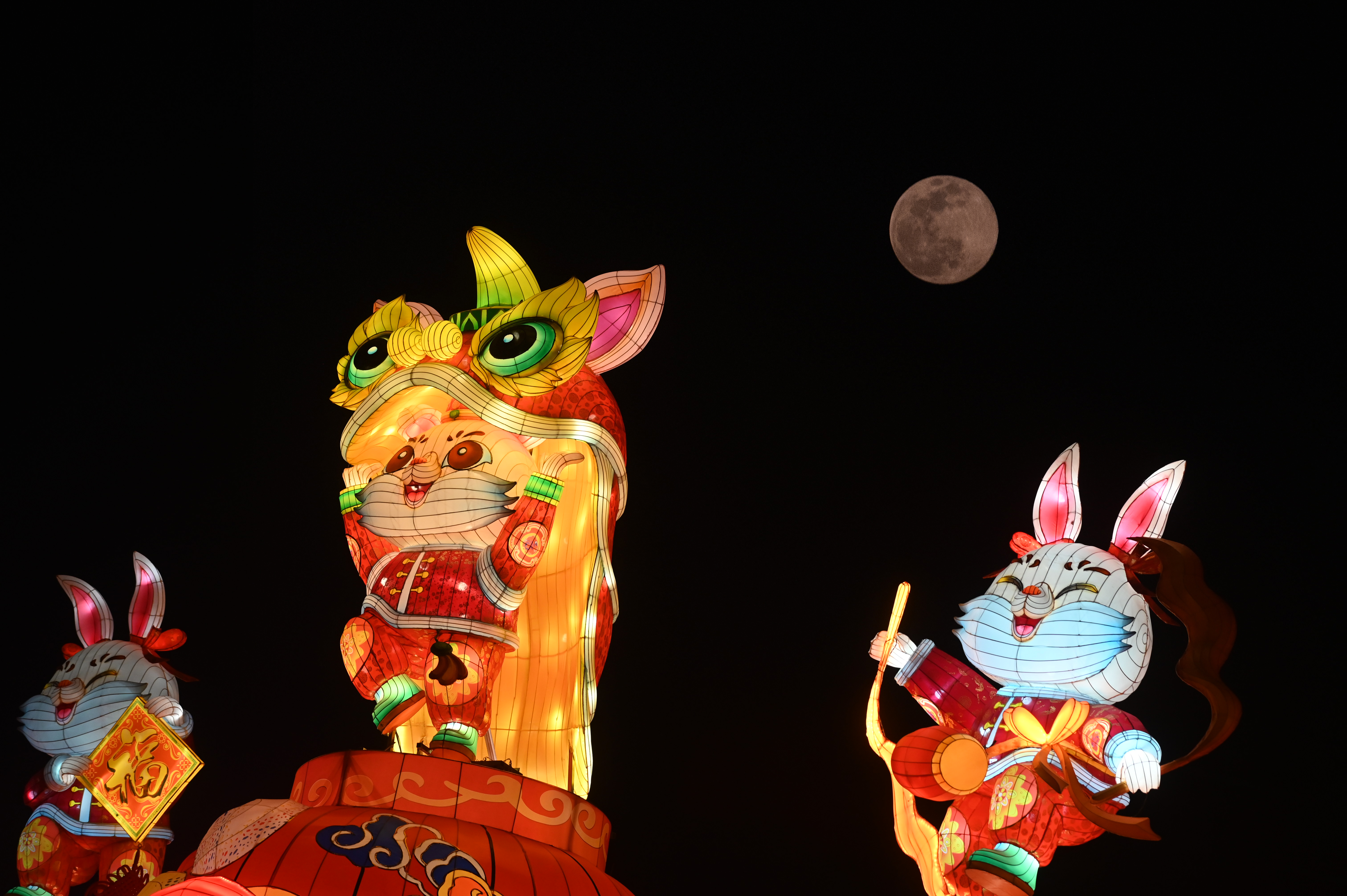The full moon will appear a bit more petite in the sky tonight as the smallest full moon of 2024 rises.
February’s Full Snow Moon will occur while the moon approaches its farthest point from Earth in its orbit, known as apogee. That means tonight’s full moon will appear up to 10% smaller in the night sky — not enough for most of us to notice, but seasoned moonwatchers might be able to tell the difference.
The Full Snow Moon will rise around 6:30 p.m. local time in the east, just as the sun is setting in the west. It will appear between the hind legs of the Leo constellation, the Lion, and reach its highest point in the night sky around midnight. The moon will remain visible for the entirety of the night, setting with the next rising sun.
Related: Full moon calendar 2024: When to see the next full moon
The moon appears to change in size in the night sky throughout the month from our vantage point on Earth’s surface due to the fact that the moon’s orbit isn’t perfectly circular. Instead, it’s elliptical, or oval-shaped, meaning its distance to Earth changes throughout its journey.
The moon reaches around 226,000 miles (363,300 kilometers) from Earth while at its closest point to our planet (known as perigee), and about 251,000 miles (405,500 km) from our planet while at its farthest point (apogee).
When a full moon occurs while the moon is at perigee, we call these “supermoons” due to the fact that they appear up to 14% bigger in the sky. While the size difference can be difficult to discern with the unaided eye, supermoons are noticeably brighter, sometimes appearing up to 30% brighter in the night sky.
When full moons occur while the moon is at apogee, these moons are sometimes referred to as “micromoons,” although neither micromoon nor supermoon are officially-recognized astronomical terms.
This month, the moon will reach the exact point of apogee at 9:58 a.m. EST (1458 GMT) on Sunday (Feb. 25), according to In-the-Sky.org.
February’s Full Snow Moon gets its name from the fact that it occurs in the midst of winter for the Northern Hemisphere, and February can often be the snowiest month for many parts of North America.
In China, February’s full moon this year marks the end of Spring Festival, the holiday period that begins with Lunar New Year. In 2024, this full moon falls during a traditional holiday known as the Lantern Festival that marks a high point in Chinese New Year celebrations.

Other cultures and locations have their own names for February’s full moon, however. The Ojibwe (or Anishinaabe) people of what is now southern Canada and the Midwestern United States have referred to February’s full moon as Mikwa Giizis, or the Bear Moon. The Indigenous Cree people of North America have called it the Kisipisim, or the Great Moon, while the Cherokee people of what is now the Southeastern United States know it as the Bone Moon.
If you’d like to take a look at the moon up close, our guides to the best telescopes and best binoculars are a great place to start.
And whether you want to take your own photos of the moon or to explore photographing the night sky in general, check out our guide on how to photograph the moon, as well as our recommendations for the best cameras for astrophotography and best lenses for astrophotography.
Editor’s Note: If you get a great photo of the full moon and would like to share it with Space.com’s readers, send your photo(s), comments, and your name and location to spacephotos@space.com.



